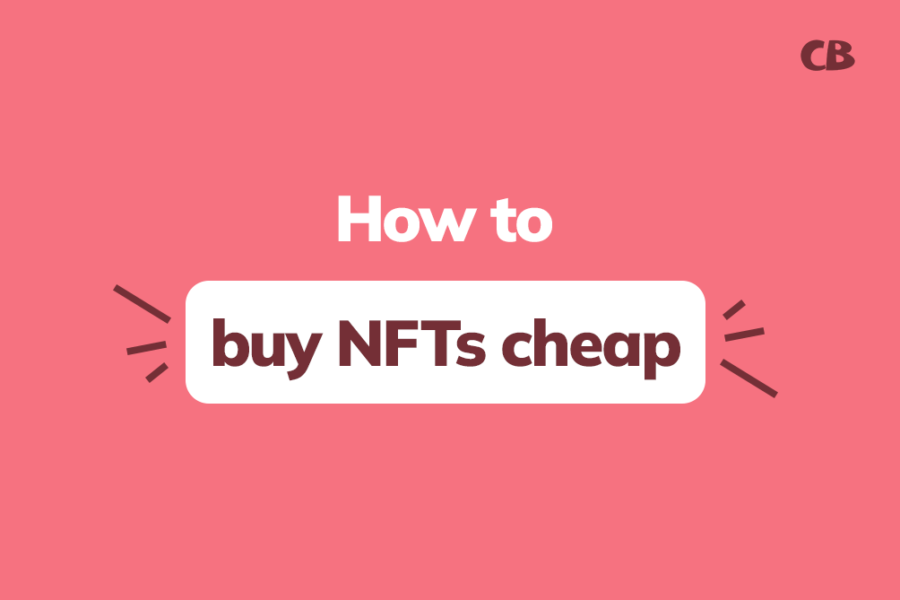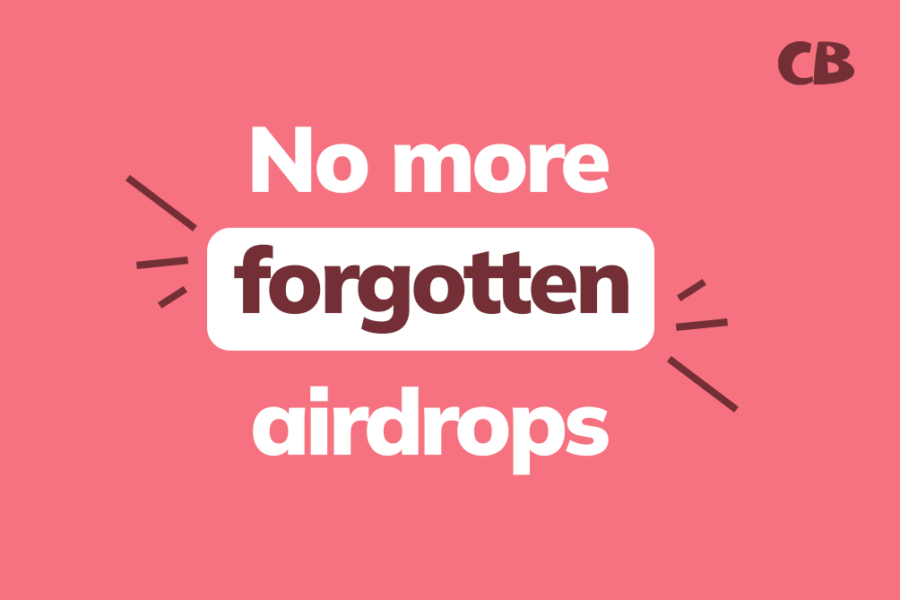Are you stuck at the ZETA Assimilated 101 Galxe quiz? You’re in luck!
In this post, not only will you find the correct answers to all seven quiz questions, but you’ll also find detailed explanations to back up the answers.
Note: For each quiz, the correct answer will be formatted in bold italics.
If you haven’t joined ZetaChain yet or you’re unfamiliar with the Galxe campaign, join the ZETA testnet now with thousands of other beta testers and earn ZETA tokens before the mainnet launch.
Join the Zeta testnet now to be eligible for the ZetaChain airdrop.
After completing the quiz, it might take up to 12 hours for your wallet to be eligible, so don’t panic if the system hasn’t verified that you passed the quiz. While you’re waiting, you can study for the next quiz using the ZETA Assimilated 201 quiz answers I’ve prepared for you.
Once you mint your NFT on Galxe, make sure to get your ZETA Assimilated Discord role in the ZetaChain Guild.
Alright, let’s solve the quiz questions.
ZETA Assimilated 101 Quiz Question 1
ZetaChain is the first public L1 blockchain and omnichain smart contract platform. ZetaChain enables full interoperability with
- Layer 1 blockchains (Ethereum, BSC, Cosmos, Etc.)
- Layer 2 blockchains (Polygon, Optimism, Etc.)
- Non-smart blockchains (Bitcoin, Dogecoin, Etc.)
- All the above (and any existing & future chain!)

ZetaChain is the first public L1 blockchain and omnichain smart contract platform that enables full interoperability with all blockchains, including layer 1 blockchains, layer 2 blockchains, and non-smart blockchains. This means that developers can build dApps that can span any chain and interact with assets and data on any chain.
ZetaChain achieves this interoperability through its unique design, which combines a Cosmos-based layer 1 blockchain with a novel messaging protocol. The Cosmos-based layer 1 blockchain provides the security, scalability, and decentralization of a traditional blockchain, while the messaging protocol allows ZetaChain to communicate with any other blockchain.
This makes ZetaChain a powerful platform for building dApps that can take advantage of the best features of different blockchains. For example, a dApp could be built on ZetaChain that allows users to trade assets across Ethereum, BSC, and Bitcoin. Or, a dApp could be built that uses the security of Bitcoin to store user data.
ZetaChain is still under development, but it has the potential to revolutionize the way we interact with blockchains. By providing full interoperability between all blockchains, ZetaChain makes it possible to build truly decentralized applications that can scale to meet the needs of users around the world.
Join the Robinhood Wallet Whitelist to be eligible for their airdrop.
Here are some of the benefits of using ZetaChain:
- Full interoperability: ZetaChain can communicate with any other blockchain, so developers can build dApps that span any chain.
- Scalability: ZetaChain is built on Cosmos, which is a scalable and secure blockchain platform.
- Decentralization: ZetaChain is a decentralized blockchain, so users can be sure that their data is secure.
- Efficiency: ZetaChain uses a novel messaging protocol that is more efficient than other interoperability solutions.
To learn more about ZetaChain, visit their website.
ZETA Assimilated 101 Quiz Question 2
ZetaChain is the only public blockchain that supports odApps. What’s an odApp?
- Omnichain decentralized app
- Online decentralized app
- Omnichain distributed app
- Of-all-chains decentralized app
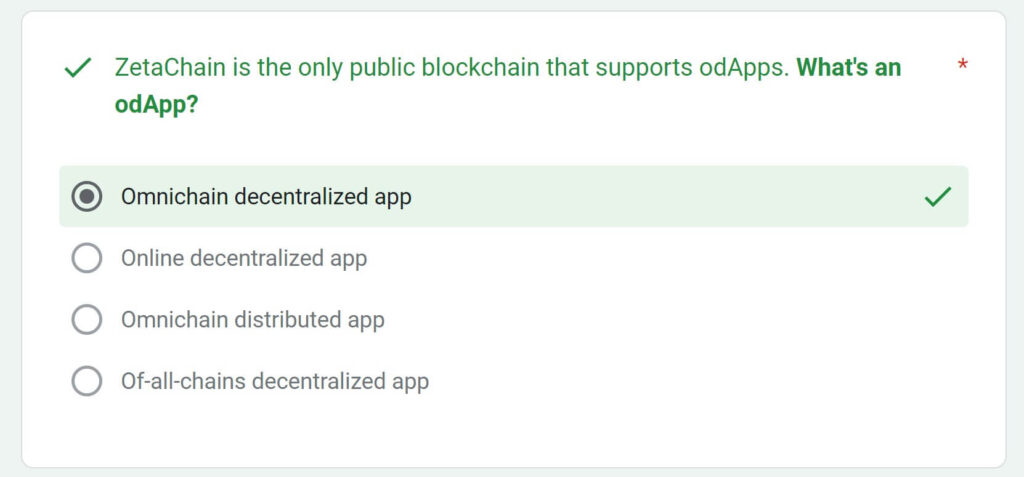
An odApp is a decentralized application that can run on multiple blockchains. This means that odApps are not limited to a single blockchain but can be used to access assets and data on any blockchain.
ZetaChain is the only public blockchain that currently supports odApps. This is because ZetaChain is designed to be interoperable with all blockchains. So, odApps built on ZetaChain can seamlessly communicate with odApps built on other blockchains.
Here are some examples of odApps:
- A dApp that allows users to trade assets across multiple blockchains.
- A dApp that uses the security of Bitcoin to store user data.
- A dApp that allows users to participate in cross-chain governance.
OdApps are still in the early stages of development, but they can change how we use blockchain technology. By providing a way to build dApps that can span multiple chains, odApps make it possible to build truly decentralized applications that meet global demand.
ZETA Assimilated 101 Quiz Question 3
ZetaChain introduces the first Omnichain Smart Contracts, which can:
- Only move native fungible assets cross-chain
- Only move native NFTs cross-chain
- Access and manage assets, data, and liquidity on any chain
- Execute programs on blockchains that have certain standards

Omnichain Smart Contracts are a new type of smart contract that can access and manage assets, data, and liquidity on any chain. This means that developers can build dApps that can work on any chain and interact with assets and data on any chain.
The first option is incorrect because Omnichain Smart Contracts can move both native fungible assets and native NFTs cross-chain.
The second option is incorrect because Omnichain Smart Contracts can move more than just native NFTs cross-chain.
The last option is incorrect because Omnichain Smart Contracts can execute programs on blockchains irrespective of their standards.
ZETA Assimilated 101 Quiz Question 4
Some benefits of Omnichain Smart Contracts include:
- Less fees/slippage for users (everything happens in 1 step)
- Improved security (single chain & faster settlement)
- Simpler app user interfaces (like one wallet without having to switch networks)
- All the above
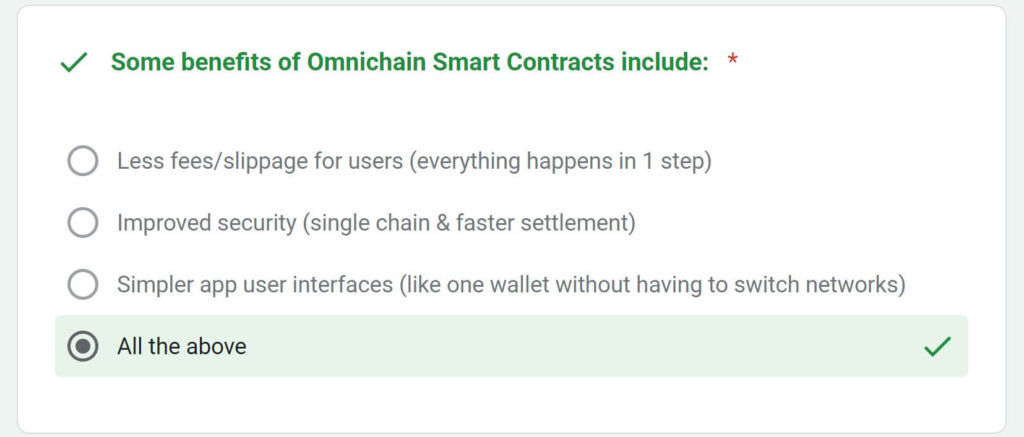
Omnichain Smart Contracts offer a number of benefits over traditional smart contracts, including:
- Less fees/slippage for users: Omnichain Smart Contracts can reduce fees and slippage for users by eliminating the need to bridge assets between chains. This is because Omnichain Smart Contracts can access and manage assets on any chain, so users can simply trade assets directly from their wallets.
- Improved security: Omnichain Smart Contracts can improve security by reducing the attack surface since they only need to be deployed once—on the ZetaChain blockchain. This makes them less vulnerable to attacks than traditional smart contracts, which need to be deployed on each chain that they interact with.
- Simpler app user interfaces: Omnichain Smart Contracts can simplify app user interfaces by allowing users to interact with assets and data on any chain from a single wallet. This makes it easier for users to use dApps that span multiple chains.
See also: ZETA Assimilated 201 Quiz Answers
In addition to these benefits, Omnichain Smart Contracts also offer a number of other potential benefits, such as:
- Increased liquidity: Omnichain Smart Contracts can increase liquidity by making it easier for users to trade assets across chains.
- Enhanced interoperability: Omnichain Smart Contracts can enhance interoperability by allowing dApps to communicate with each other on different chains.
- Reduced risk: Omnichain Smart Contracts can reduce risk by making it more difficult for users to lose their assets.
Overall, Omnichain Smart Contracts offer several potential benefits that could make them a valuable tool for developers and users.
ZETA Assimilated 101 Quiz Question 5
Omnichain dApps can manage and connect data and value across all blockchains, including non-smart contract platforms. An example of a non-smart chain is:
- Bitcoin
- Ethereum
- Polygon
- Avalanche
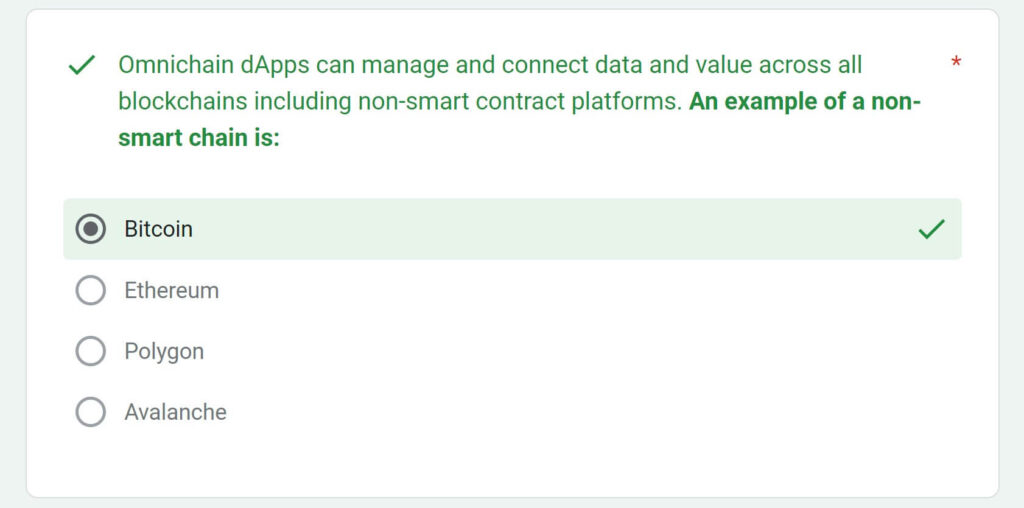
Bitcoin is a non-smart contract platform. This means that it does not support the execution of smart contracts, which are programs that run on the blockchain and can be used to automate tasks or create new applications.
Ethereum, Polygon, and Avalanche are all smart contract platforms, meaning they support the execution of smart contracts.
ZETA Assimilated 101 Quiz Question 6
How do cross-chain swaps on ZetaChain work?
- Two-way pegging mechanism where the assets are locked, and the user receives a wrapped version.
- One-way peg where the only native value that goes cross-chain is via the ZETA token. The user receives the desired native asset in one swap.

ZetaChain uses a one-way peg mechanism for cross-chain swaps. This means that the only native value that goes cross-chain is the ZETA token. When a user wants to swap an asset from one chain to another, they first need to convert their asset to ZETA. Then, they can send the ZETA token to the other chain and swap it back for the desired asset.
This one-way peg mechanism has several advantages over two-way pegging mechanisms. First, it is more efficient, as it does not require the creation of wrapped assets. Second, it is more secure, as it reduces the risk of hacks and fraud. Third, it is more user-friendly, as users find it easier to understand and use.
Claim your free Web3 Email & get 250 EMC
These are the steps involved in a cross-chain swap on ZetaChain:
- The user sends their asset to a ZetaChain bridge contract.
- The bridge contract converts the asset to ZETA tokens.
- The bridge contract sends the ZETA tokens to the destination chain.
- The user swaps the ZETA tokens for the desired asset on the destination chain.
The ZetaChain bridge contract is a smart contract that is deployed on both the ZetaChain blockchain and the destination blockchain. The bridge contract is responsible for converting assets between the two chains and ensuring that the swap is executed safely and securely.
ZetaChain’s one-way peg mechanism for cross-chain swaps is a unique and innovative approach that can revolutionize how we swap assets between blockchains. As ZetaChain continues to develop, its cross-chain swap mechanism may become the standard for cross-chain interoperability.
ZETA Assimilated 101 Quiz Question 7
Examples of Omnichain dApps include:
- Cross-chain lending & borrowing in a single step
- NFTs & Identity
- DAO & governance tools
- All the above & much more!
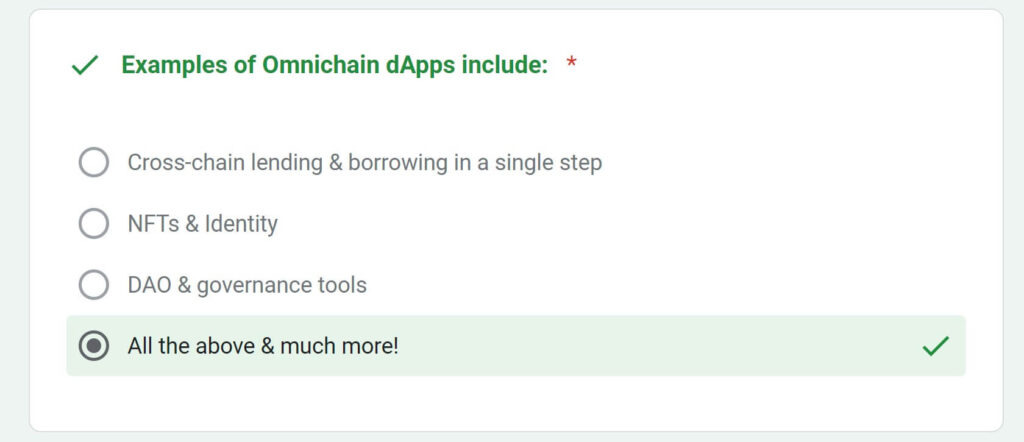
Omnichain dApps can be used to build a wide variety of applications, including:
- Cross-chain lending and borrowing in a single step: This could allow users to borrow assets from one chain and lend them on another chain without having to bridge assets between chains.
- NFTs and identity: This could allow users to create and manage NFTs on any chain and to use NFTs to verify their identity across chains.
- DAO & governance tools: This could allow users to participate in DAOs and governance systems on any chain.
These are just a few examples of the many potential applications of Omnichain dApps. As the technology continues to develop, we can expect to see even more innovative and exciting applications being built.
Here are some other potential applications of Omnichain dApps:
- Cross-chain DeFi: This could allow users to access DeFi services on any chain.
- Cross-chain gaming: This could allow users to play games across chains and earn rewards on any chain.
- Cross-chain data sharing: This could allow users to share data across chains without having to worry about interoperability issues.
The possibilities are endless! Omnichain dApps can change how we interact with blockchains and build decentralized applications.
Don’t forget to join the ZetaChain community on Discord and follow the team on Twitter.
Subscribe to my Telegram channel for more updates.
